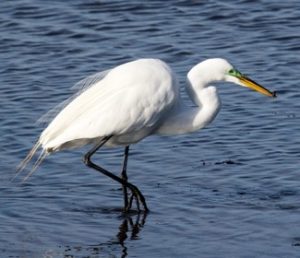
Each winter, juvenile American eels (Anguilla rostrata) arrive in the Barnegat Bay. At this life stage, they are known as glass eels (if they are still young enough to be transparent) or elvers (if they are somewhat older and opaque). These eels hatched from eggs in the warm waters of the Sargasso Sea and travelled up to a year and 1,000 miles on ocean currents before reaching the east coast of the United States.
Once they arrive, most glass eels migrate from estuaries into freshwater streams and rivers, where they will spend most of their lives maturing. These eels may live for 15 to 20 years and grow to lengths of over three feet before the adults leave the estuaries and freshwater streams of the eastern U.S. to return to the Sargasso Sea, where they spawn and eventually die.

In order to keep track of the size and condition of the American eel population in the Barnegat Bay watershed, the Barnegat Bay Partnership has been conducting an eel population survey since 2012. Each winter and early spring, our field technicians and volunteers set eel collectors in streams throughout the watershed. These collectors are meant to mimic the vegetation that eels like to hide in, and they attract the young eels as they are passing by on their migration route. The eels in the collectors are taken back to the lab to be counted and “staged” – a technique where markings on the eels are used to tell their age – and finally released back into the stream where they were collected.

Eels are important in coastal stream ecosystems as food sources, predators, and transportation for larval mussels, which hitch a ride on migrating eels. In recent years, American eel populations have been declining due to exotic parasites, fishing pressure, and dams which block their migration route. The U.S. Fish and Wildlife Service decided not to list American eel as a threatened species in 2015, but their low population numbers remain a concern up and down the Atlantic coast.
Last year, we completed 271 monitoring events and measured a total of 721 eels. The data we collect are shared with our state and federal partners for use in state- and coast-wide assessments of the American eel population.


